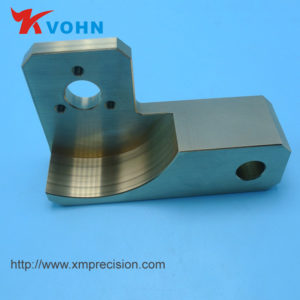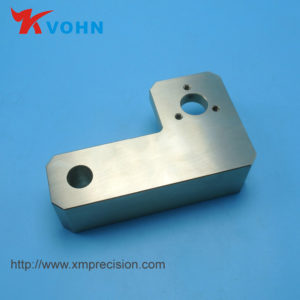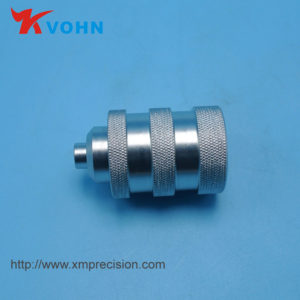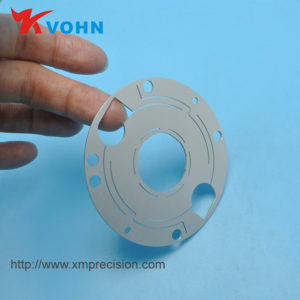Cutting fluid classification: 3d printing metal parts
Proportions classified by processing type and use:
Processing methods
Forming processing
Cutting processing
Corrosion and rust prevention
other
Accounting
36
38
13
13
According to form, there are two kinds of liquid cutting fluid and solid lubricant. Liquid cutting fluids commonly used in production are: oil-based cutting fluids (cutting oils) mainly based on lubrication and water-based cutting fluids (mainly cutting fluids) mainly based on cooling. 3d printing metal parts
Oil-Based Cutting Fluid: Oil-based cutting fluid, also known as cutting oil, is based on a base oil (mineral oil or synthetic oil). When it is used, it is not necessary to dilute. Additives include oily agents, extreme pressure agents (such as chlorine, sulfur, phosphorus, etc.), corrosion inhibitors, antioxidants, and the like.
Water-based cutting fluid is currently the most used cutting fluid, and its products account for about 70% of the total market share of cutting fluids. The water-based cutting fluid needs to be diluted with water and used. According to the diluted state, it can be divided into emulsified cutting fluid, microemulsified cutting fluid and synthetic cutting fluid.
Liquid cutting fluid action and composition: 3d printing metal parts
The main role in machining is cooling, lubrication, cleaning and rust prevention. Convection and vaporization of the liquid can reduce the surface temperature of the tool and the workpiece, thereby preventing burn and deformation of the workpiece surface. In addition, the cutting fluid should have anti-foaming and anti-mold deteriorating properties so that it can be discharged without polluting the environment, without harming the human body and using economic requirements. For this reason, some special additives are often added to the cutting fluid, such as oiliness agent (which can be adsorbed on the surface of the workpiece to form an oil film) and extreme pressure agent (it can form strong chemical film under high temperature and high pressure, and it can reduce friction and prevent adhesion. ), anti-rust agent (to prevent metal corrosion), anti-foaming agent (to prevent the cutting fluid from foaming when spraying), anti-oxidant (to prevent cutting oil from oxidation under high temperature and high pressure), surfactant and so on.
The liquid cutting fluid process produces the following three types of oil mist: 3d printing metal parts
(1) Clean oil mist generated by jet impact without solid dust;
(2) Smoke resulting from evaporation or burning due to the high temperatures of heating or high speed cutting;
(3) Oil mist containing grinding dust generated by spraying of metal cutting fluid during grinding.
The effect of liquid cutting fluid on human health:
Many people have misconceptions about the toxicity of cutting fluids, thinking that the greater the odor, the greater the toxicity. In fact, there is no absolute necessary link between the two, then the cutting fluid has an impact on human health?
Refer to the following documents for explanation:
(1) Fu Shuqin, Zhou Wei. Metalworking lubricant mist control status and progress [J]. Lubricants, 2003(12).
(2) Phiuip wayne Mark-sben, P. E, An Assessment of Tool-life PerfoIInance in NDM (NearDry Machining) of Auto-motive Steel Components for Sustainable Manufacturing[D]. Universityof Kentucky, 2004.
(3) Jerry P Byers. Metalworking Fluids. Cincinnati[M]. Ohio: Marcel Dekker, Inc, 1994. 3d printing metal parts
Why do you recommend reading a Japanese woman’s skirt so short?
(1) May cause respiratory diseases such as asthma
According to literature data, the composition of metal cutting fluids is complex, and additives and pollutants therein may be used as stimuli to induce sudden asthma, worsen the condition of existing asthma, or cause airway discomfort in patients without asthma. Soluble and pure oils are associated with asthma in four types of metal cutting fluids. Three types of pure oils, soluble oils, and synthetic oils have been identified because of the inhalation process can cause workers’ airway dysfunction and respiratory diseases. Even if the concentration of oil mist is only 0.41 to 0.55 mg/m3, long-term exposure of workers to this oil mist will still cause chronic bronchitis, chest discomfort, and airway irritation. Earlier research on allergic pneumonia was not performed on workers exposed to oil mist from metal cutting fluids. However, due to the recent surge in the number of workers suffering from allergic pneumonia, the fact that prolonged exposure to oil mist can cause pneumonia has been studied and studied. Confirm the mouth. Research data on the effects of oil mist from metal cutting fluids on workers’ lung function are still lacking. One of the reasons for this is that most of the decline in lung function that can be observed is irreversible. In addition, the decline in lung function is related to the amount of oil mist that is in contact with it. This is a long-term accumulation. However, studies using animals as subjects showed that dogs exposed to oil mist of 5 to 100 mg/m3 for more than 12 months exhibited fat-containing alveoli and macrophage adipose granuloma, and they were afraid of morphological changes in respiratory tissue. 3d printing metal parts
(2) Carcinogenicity
Another major hazard of metal cutting fluid mist is its carcinogenicity. The carcinogenicity of metal cutting fluids mainly depends on the concentration of its additives, contamination conditions, and conditions of use. There is currently no research on the carcinogenicity of metal cutting fluids for humans, and experimental studies on animals have found that the oil mist of the cutting fluid can cause skin tumors/skin cancers, tumors, lung cancer, and pancreatic cancer. There are still many controversies about the carcinogenicity of the cutting fluid mist. Although many epidemiological studies have reported the carcinogenic tendency of metal cutting fluids and oil mists, due to the extremely long incubation period of cancer, epidemiological Research often can only evaluate the damage caused by a substance 20 to 30 years ago. To this end, researchers pointed out that the composition of metal cutting fluids decades ago completely failed to represent today’s cutting fluid. In particular, the oil refining process has undergone tremendous changes that have largely removed polycyclic aromatic hydrocarbons and other undesirable components. Therefore, it is not appropriate to extend the original proven carcinogenic tendency to current cutting fluids. However, due to the complexity of the metal cutting fluid composition, it is very difficult to simply prove that it is not carcinogenic. 3d printing metal parts
(3) Genetic effects
Compared with studies on other aspects of health hazards, the study of genetic effects of cutting fluid mists is minimal. According to the results of the 1995 Fuchs J et al. study, IARc (United Nations Agency for International Oncology Research) characterizes N-nitrosodiethanolamine (NDELA) as a 2B carcinogen (possibly carcinogenic to humans). NDELA strongly influences the breakage of mononuclear blood cell DNA strands. Workers exposed to air with a NDELA concentration greater than 500 mg/m3 were significantly more exposed to DNA strand breaks below 50 mg/m3. Although the EPA (United States Environmental Protection Agency) has banned NDELA as an additive for metal cutting fluids, triethanolamine (TEA) and diethanolamine (DEA) can still react under the action of nitrosating agents in metal cutting fluids. Generate NDELA. 3d printing metal parts
CNC Machining Service & CNC Machining parts

machining parts

pure tungsten

Streamlined CNC Machining Procurement

CNC Machined components
